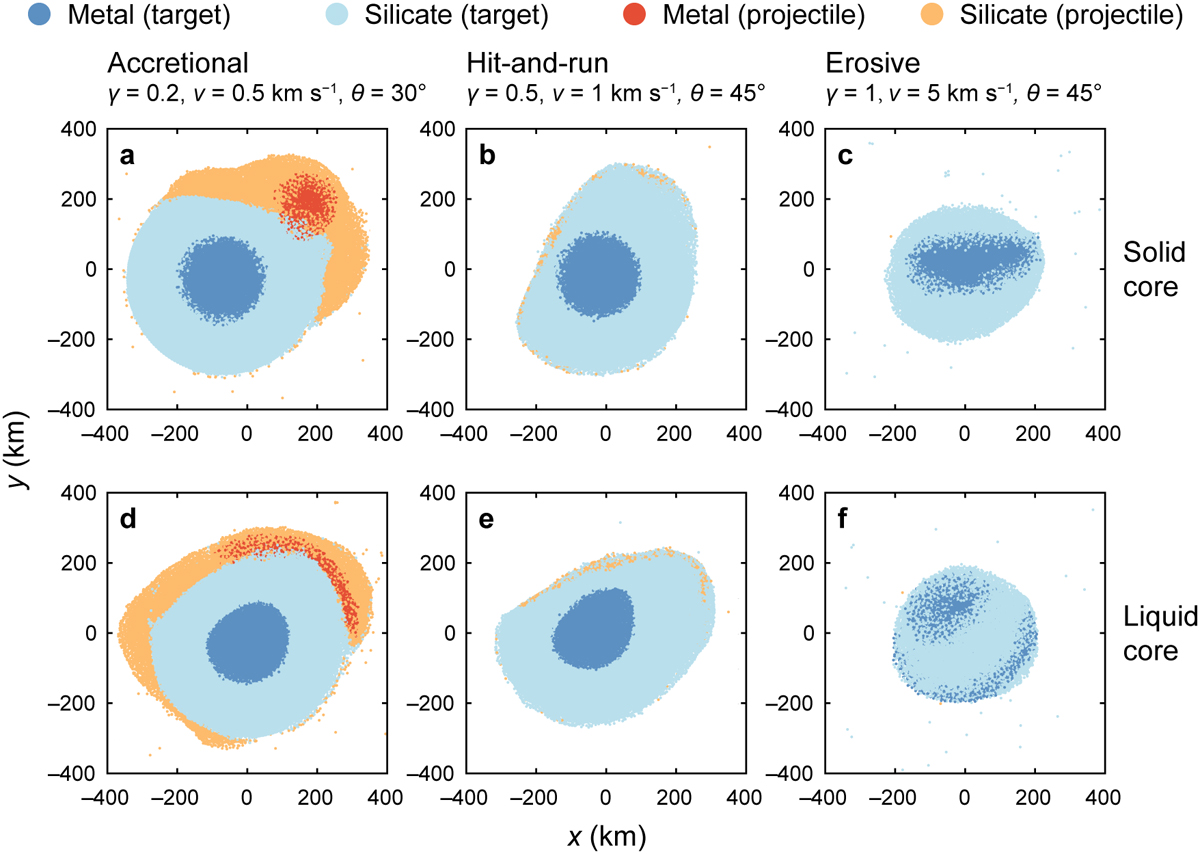Fig. 1

Download original image
Distribution of metal and silicate at the end of simulations. The cross-sections of the largest impact remnants in different impact regimes are shown, which are in the plane of the projectile trajectory. The materials and sources of the particles are colour-coded (see legend): the projectile’s metal and silicate are red and yellow, and the target’s metal and silicate are dark blue and light blue. The impacts are accretional impacts that have a projectile-to-target ratio (γ) of 0.2; impact velocity (υ) of 0.5 km s−1 (1.6 times the mutual escape velocity, υesc); impact angle (θ) of 30° (a and d); hit-and-run impacts with γ = 0.5, υ = 1.0 km s−1, υ/υesc = 3.0, θ = 45° (b and e); and erosive impacts with γ = 1.0, υ = 5.0 km s−1, υ/υesc = 13.7, θ = 45° (c and ƒ). The cores of the projectiles and the targets were solid (a–c) or liquid (d–f).
Current usage metrics show cumulative count of Article Views (full-text article views including HTML views, PDF and ePub downloads, according to the available data) and Abstracts Views on Vision4Press platform.
Data correspond to usage on the plateform after 2015. The current usage metrics is available 48-96 hours after online publication and is updated daily on week days.
Initial download of the metrics may take a while.


